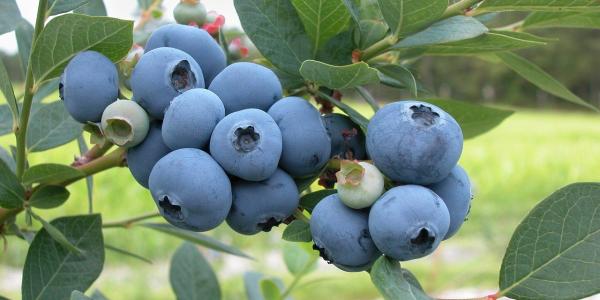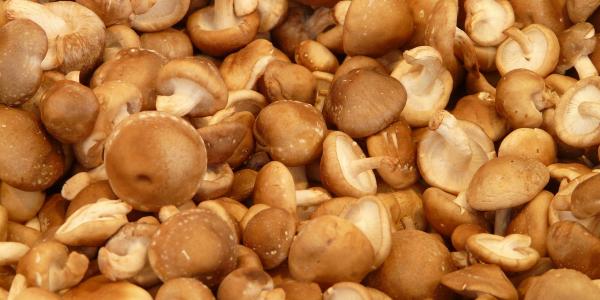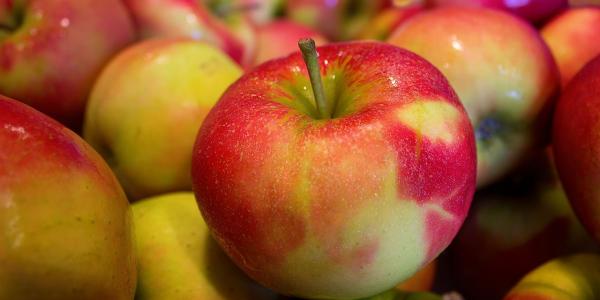Turkey
.jpg)
Everything you need to know to buy and prepare your holiday bird! This is an update from an article originally posted in November 2016.
SEASON
'Tis the season for turkey! Frozen turkeys are available year-round. Fresh turkeys are featured around Thanksgiving and Christmas.
SHOPPING
Choosing your holiday turkey is a matter of taste and price. The best bargains are in your grocer's freezer.
Fresh turkeys may be chilled to 26 degrees which keeps them fresh longer but also allows ice crystals to form, melt, and reform. This can cause the turkey to be tough and dry when cooked. You may be better off with a frozen turkey that is deep frozen and only thawed once--when you thaw it yourself.
- Basted or Self-basting: These whole birds are injected with a solution that includes "butter or other edible fat, broth, stock, or water; plus spices, flavor enhancers, and other approved substances" according to USDA specifications. This process increases the moisture content in the cooked meat. It may also mask the natural taste of the turkey. No need to brine a basted turkey.
- Free Range or Cage Free: These birds are raised in an environment where they have free access to the outside allowing increased mobility. This helps to develop muscle giving their meat a more full and complex flavor. The term does not mean organic or naturally processed. May or may not be self-basting. If the ingredient list just says turkey, it is not self-basting. Best to brine it.
- Heritage: Heritage turkeys, sometimes referred to as heirloom, must be reproduced by naturally mating, endure the rigors of the outdoors, and have a slow rate of growth. Best to brine it.
- Kosher: These birds are killed according to Jewish dietary laws. Salt is applied both inside and outside, then they are left to drain before soaking and washing. The salting process pulls moisture from the meat so that the meat is denser and more flavorful. No need to brine.
- Natural: This term can be added to the label if no artificial flavors, colors, ingredients, or chemical preservatives are used in processing the bird. Antibiotics, however, are allowed. The term does not mean organic. Best to brine it.
- Organic: Organic means that the farmer does not use any chemicals, antibiotics, or roughage fillers when raising the birds; and that the birds are given access to the outside and sunlight. Also, the bird's feed must be raised without chemical fertilizers or pesticides. These birds are the most expensive but also have high quality and flavorful meat. Best to brine it.
STORING
Refrigerate your fresh turkey until you're ready to cook it.
Keep your frozen turkey in the freezer. Be sure to allow enough time to thaw, about 24 hours in the refrigerator for every 4 to 5 pounds.
Safe storage in the refrigerator includes putting it in a pan to capture the juices that are released during the big thaw. This can amount to a lot of liquid so be sure the pan has at least one-inch sides or that you empty it daily. Just in case overflow happens, place the turkey on the lower shelf of the fridge.
PREPARING
Step-by-step instructions for getting your big bird ready for roasting:
Remove the outer wrapping. While it is common practice, it is best not to wash the turkey.
Check both cavities for neck and giblets and set them aside. The neck can be used to make turkey stock. The giblets? They're full of flavor and make great gravy. Some people consider cooked giblets to be essential for gravy. Set the liver aside and cook it separately as its flavor can be off-putting.
Thoroughly dry the turkey inside and out with paper towels.
Use kitchen twine to tie the legs together at the ankles. An alternative is to tuck the ankles in the band of skin located by the tail.
Tuck the wings under the bird. Or snip off the wing tips and reserve them for stock.
Melt butter and brush it all over the breast and legs, season with salt and pepper as desired. Place the turkey breast-side down on a V-rack or alternative rack in a roasting pan, then brush the back with butter.
Roasting
Move oven rack to the lowest position. Heat oven to 400 degrees.
Roast the turkey with breast-side down for 1 hour. Then remove turkey from the oven. Reduce oven temperature to 325 degrees.
Tip the bird to let any juices accumulated in the cavity drain into the pan. Protecting your hands with layers of paper towel or clean potholders or kitchen towels, flip the turkey so the breast-side is up.
Return turkey to the oven and continue to roast until breast meat registers 160 degree and thigh meat registers 175 degrees, about 1 to 1 1/2 hours for smaller turkey (less than 18 pounds) or 2 to 2 1/2 hours for larger bird (18 to 22 pounds)
Move turkey to cutting board, tent with aluminum foil, and let rest for 30 minutes before carving.
FLAVORS
While turkey is a poultry product, it has a unique flavor quite different from chicken. Food scientists say its flavor is more similar to pork than chicken. Self-basting turkeys have the mildest flavor. Bolder, more complex turkey flavor, some describe it as gamier, is found in heritage, organic, and free-ranging turkeys. Dark meat located in the thighs and drumsticks has more turkey flavor than white breast meat. The dark meat is also higher in fat, adding and carrying flavor.
Brine adds tastiness but does not affect flavor as much as it increases moisture of the cooked meat.
Herbs are a wonderful addition to enhance turkey flavor. Mince fresh herbs such as parsley, thyme, sage, rosemary, garlic, and shallot and mix with enough olive oil to make a paste. Be light-handed with the sage, rosemary, and garlic as they are strong-flavored herbs. Rub the herb paste under and over the breast skin and inside the cavity when preparing the turkey for roasting.
Related Articles

Blueberries
Michigan fresh blueberries are the best you can get from mid-July through mid-September. "Eat blue. Go green."

Citrus Fruits
Citrus fruits have beautiful juicy pulp and a delicious zing in every bite.







